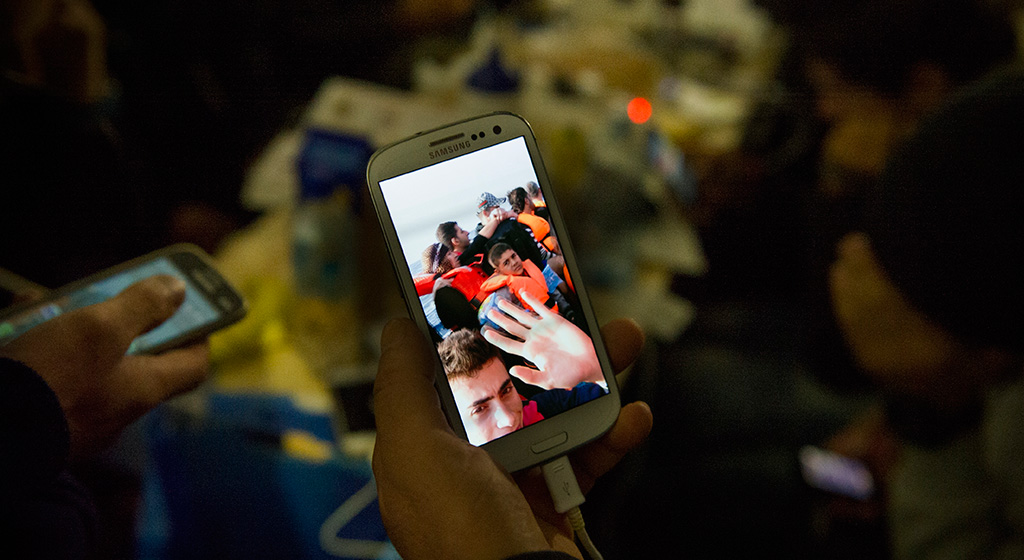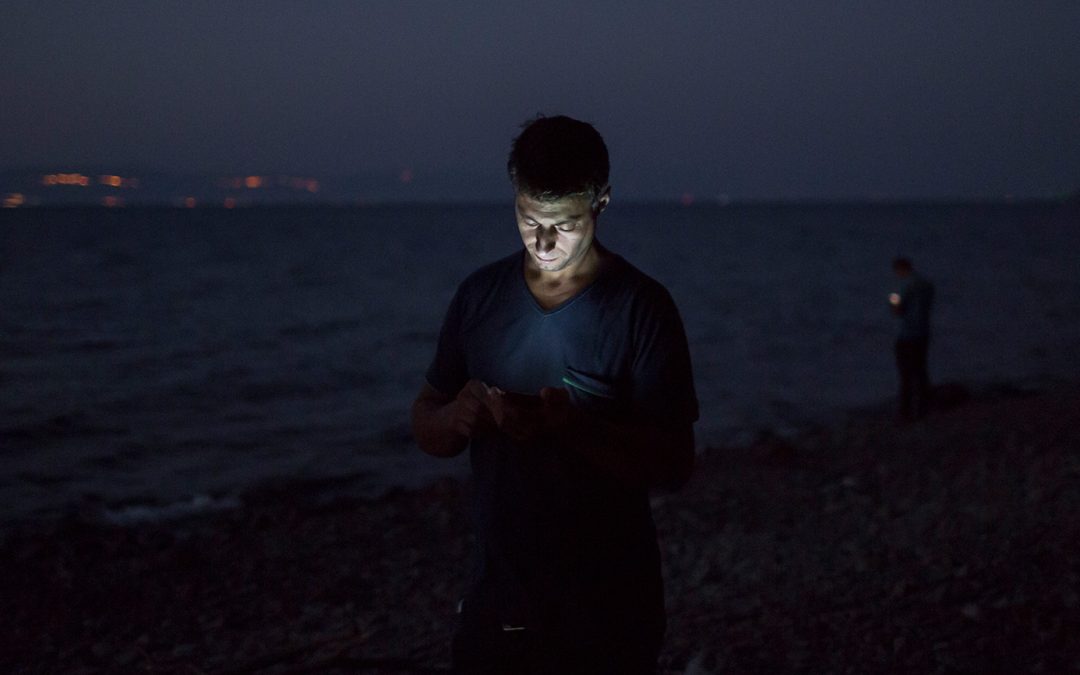Ever since the Syrian refugee crisis has come to the world’s attention, coders, designers and other professionals of the technology sector have jumped in to help with countless new apps, websites and smart devices. Hackathons – multi-day events where tech specialists gather to work on a specific challenge or project – have been organized in just about every major city, while some of the world’s largest tech companies, including Google and Facebook, have pledged to help.
As humanitarians and innovators, we’re glad to see this interest. Technology plays an increasing role in improving our assistance to persons of concern, and we have much to learn about the startup world’s approach to problem-solving.
But with so many initiatives being spearheaded by different groups around the world, we wonder whether a lack of coordination may prevent these efforts from having the most impact, and what our role should be in improving the collaboration between both sectors.
Take Refoodgee, an app launched by Berlin-based startup Memorado to connect newly arrived refugees with locals through food. It’s been praised by the media, but the app hasn’t been updated for months and only counts a few hundreds users. Refugees Welcome has been dubbed the “AirBnB for refugees” because it pairs refugees looking for a temporary place to stay with hosts in European cities. But one of the app’s employees told the Huffington Post the service couldn’t find enough hosts to keep up with the demand. The number of rooms listed on the app decreased significantly after an initial spike, she explained.
Then there are more blatant cases of failures. The “I Sea” app claimed to allow its users to scour the Mediterranean to spot migrant ships in distress by showing real-time satellite images. But the live feed turned out to be nothing more than a static image of the ocean, and the app was shut down after much uproar.
Shelly Taylor, a London-based tech veteran and creator of the Refugee Aid app, told Londonist she worries the enthusiasm for refugee-centered technology may fail to materialize into tangible products. “Everyone talking about tech solutions is creating a lot of noise and not a lot of solutions. If 5,000 ideas come out of it, there’s only ever going to be a minority which are executed and are useful for the refugee crisis,” she explained.
In many cases, well-intended developers find themselves confronted with the realities of operating in an unfamiliar and challenging context. Mike Butcher, who is the editor of Tech Crunch and a veteran of the startup world, created TechFugees, an organization that organizes hackathons around the world around issues linked to the refugee crisis. Years of experiences in the tech sector, he found out, don’t necessarily prepare app creators for the logistics of working in emergencies. “Deploying stuff on the ground is very hard because there’s multiple agencies involved and there’s almost certainly no Internet access,” he told Londonist.

Man showing a video he made of his family crossing from Turkey to Greece in a small boat. He is charging his phone along with many others in a tent provided by Greenpeace. It also has free wifi, so becomes an important role in allowing people to contact relatives and friends, many of whom have become separated along the route. ©UNHCR/Mark Henley
In our view, the issue cannot be narrowed down to deployment alone. Too often, new apps are released with an expectation that convenience will suffice to attract new users, but without a clear understanding of how refugees use technology in their daily lives. Their behavior, habits and needs must be taken into account so that apps can reach wider adoption. As we’ve learned through many of our projects, dialogue and participation through all phases of innovation are key to building technology that meets well-defined needs.
One clear example of this is the multiplication of information-sharing apps aimed at listing useful data such as access points for food, healthcare, or border crossings. We’ve noticed that refugees still prefer to speak with UNHCR staff and partners face-to-face, even when this information is made available online. That’s because rumors, changing rules and regulations, and fluctuating asylum policies have led refugees to seek accurate and up-to-date information from trusted sources. An app built by an outside developer may do little to fill that trust gap.
There is also a risk that some of these products may be duplicated, thus limiting their reach within refugee groups. Meshpoint, a rugged wi-fi hotspot designed for harsh weather conditions, was ideated during a hackathon in London, and will soon enter the market after going through rounds of designing, prototyping and fundraising. But a similar device already exists; The Brck was born out of the Nairobi tech scene, and has been available for purchase for months.
As humanitarians, we’d hate to see this potential go to waste. Technology plays an invaluable role in UNHCR’s daily operations, helping us communicate with persons of concern, improve logistics and strengthen the coordination of humanitarian responses to displacement crises. Instant Network Schools, Ideas Box and Biometric cash assistance in Jordan are all examples of collaborative projects between UNHCR and tech-minded organizations that we couldn’t have produced on our own.
The tech sector can bring technical know-how to the table, and it’s also helping us improve our processes and move faster than we usually do.
In return, tech workers can rely on our expertise to improve their understanding of the needs of displaced persons, and roll out their projects in unconventional settings. In fact, some of the most successful refugee-centered technology projects that have sprung to life since the beginning of the Syrian crisis are the result of partnerships between our two sectors. Refugeeinfo.eu is an online platform providing useful information to refugees making their way through Europe, including services provided by local NGOs and details regarding asylum processes. The website, which is the result of a partnership between Mercy Corps, Google and The International Rescue Committee among others, currently receives up to 3000 visitors per day.
Shelly Taylor’s Refugee Aid app collects and shows information on the location of services provided by humanitarian agencies in several European countries, thus helping aid providers coordinate their efforts, and refugees locate points of assistance. The app has been built in collaboration with several organizations including the British and Italian Red Cross, Save the Children and Médecins du Monde. Partnerships like these take time to shape, but they’ve become essential to ensuring long-term adoption by the humanitarian community and responding to clear and well-defined needs.
These success stories show how far the humanitarian sector has come in embracing non-traditional partners, and how much opportunities remain to use technology in displacement settings. Apps and websites have become a common tool for refugee assistance after tech workers realized that the vast majority of displaced Syrians are using smartphones. But this doesn’t mean that tech should have no role to play in other contexts. About 80 percent of all refugees reside in Sub-Saharan Africa, yet they’ve received much less attention from coders and designers. The success of tools like mobile money service mPesa, or the wealth of mHealth and mAgriculture products that have been launched in recent years, show that technology mustn’t necessarily rely on smartphones to be impactful.
Vast areas of humanitarian assistance indeed remained untapped by technology, especially in regards to reaching the most vulnerable populations. Few products are designed with a gender lens in mind, for instance, even though women and children are known to be at a high risk of sexual and gender-based violence. “There is 24 percent less ownership or usage of mobile by women than men. That is clearly a gender gap when we have a crisis that affects everybody equally,” Stephen O’Brien, the UN’s Under-Secretary-General for Humanitarian Affairs and Emergency Relief Coordinator, told CNET about the Syrian crisis. Initiatives like Empower Hack, a group of 150 volunteers organizing hackathons to design solutions for female refugees, are addressing this imbalance by having more women involved in the design process.
Based on our experience working with technology and our journey through the innovation process, we know there is a way for both sectors to collaborate for higher impact.
It involves deepening our conversations to understand each other’s assets and liabilities, as well as involving end users, be they refugees or humanitarian workers, at every step of the way. It’s also about asking ourselves the right set of questions: What is the challenge at stake, and is technology necessarily the best way to address it? Has it been done before and if so, is it worth designing a similar product? Why is a service failing, and can it be improved? What partners can be brought on board to make this tool more sustainable? Are we the best actors to work on this project? And most importantly, who is designing, and for whom?
We look forward to asking ourselves these questions, and more, in what we hope will be an ever-increasing series of fruitful partnerships with coders, designers, project managers and other tech enthusiasts.
We’re always looking for great stories, ideas, and opinions on innovations that are led by or create impact for refugees. If you have one to share with us send us an email at [email protected]
If you’d like to repost this article on your website, please see our reposting policy.

